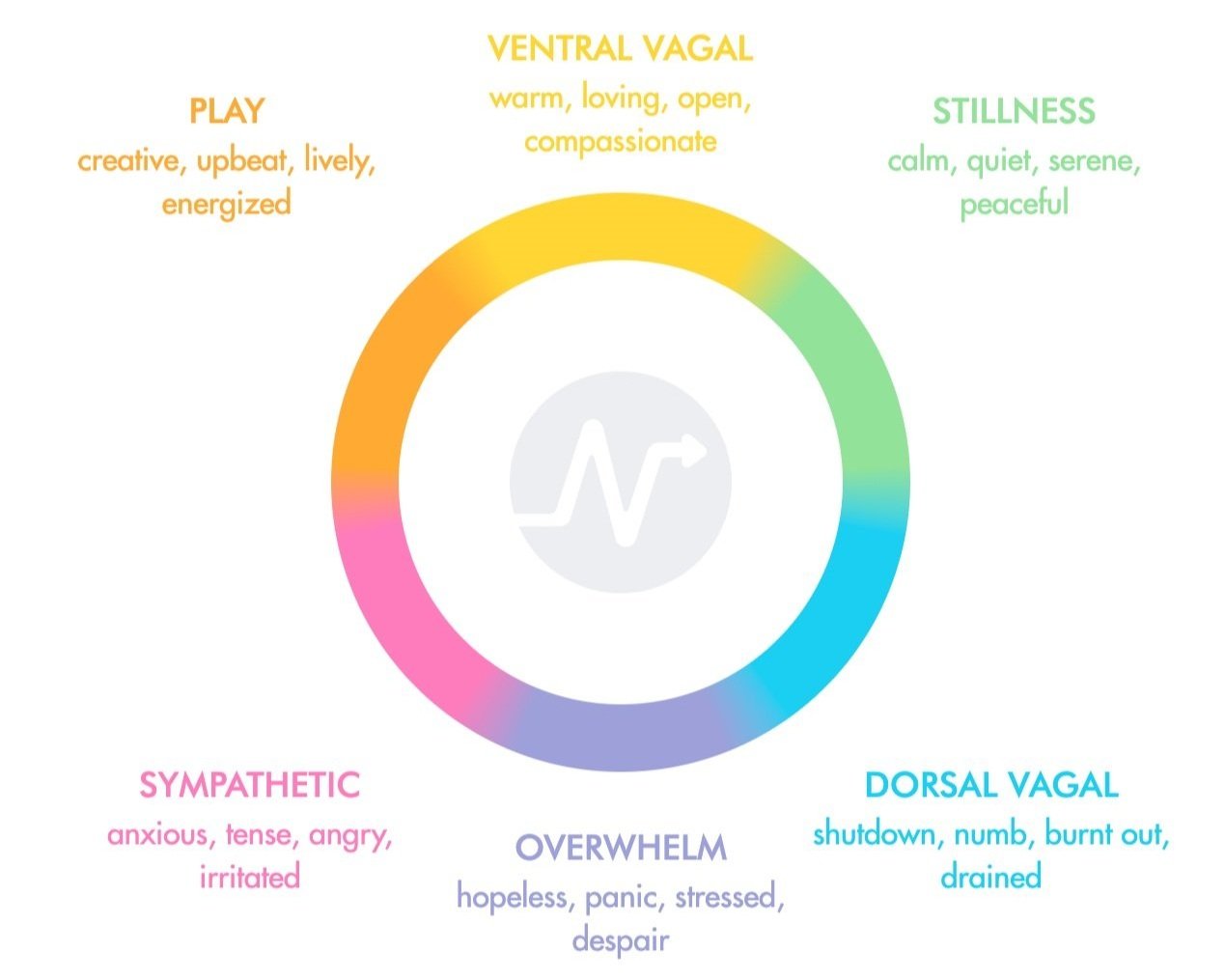Dorsal Vagal Shutdown: Causes, Signs and Solutions
It can be challenging to identify the early signs and symptoms of the Dorsal Vagal State. Here’s everything you need to know.
Identifying the Dorsal Vagal State
Recognizing when one is in a Dorsal Vagal Shutdown can be challenging, as it often manifests as a sense of numbness and disconnection. However, there are a few key indicators that can help identify this state:
Physical immobility: When the dorsal vagal circuit is activated, the body may become physically immobilized, experiencing a sense of heaviness or paralysis. This can manifest as a feeling of being stuck, unable to move forward or take action.
Emotional detachment: Individuals in a dorsal vagal state may experience a sense of emotional numbness or detachment from their surroundings and themselves. They may have difficulty feeling pleasure or connecting with others on an emotional level.
Procrastination and lack of motivation: The freeze response associated with the dorsal vagal state can also lead to a lack of motivation and a tendency to procrastinate. Individuals may find it challenging to initiate tasks or complete them, resulting in a sense of helplessness or hopelessness.
Dissociation: In extreme cases, activation of the dorsal vagal circuit can lead to dissociation, where individuals feel disconnected from their own bodies or perceive themselves as observing from a distance. This can be a coping mechanism in response to overwhelming stress or trauma.
Practical Examples of the Dorsal Vagal State in Everyday Life
To further illustrate the Dorsal Vagal State, here are a few practical examples:
After experiencing a traumatic event: an individual may enter a Dorsal Vagal State characterized by dissociation and emotional numbness. They may have difficulty engaging with their surroundings and may feel disconnected from their body.
Following a particularly stressful day at work: an individual may find themselves in a Dorsal Vagal State the next morning. They may feel physically exhausted, lack motivation, and struggle to get out of bed or engage in daily activities.
Conflict: During a conflict with a loved one, an individual may become overwhelmed and enter a Dorsal Vagal State. In this state, they may shut down emotionally, withdraw from the conversation, and find it challenging to communicate effectively.
Student: a student, overwhelmed by exam stress, enters a state of paralysis and finds themselves unable to study or complete their assignments. They procrastinate and avoid confronting the pressure, leading to increased anxiety and a further exacerbation of the dorsal vagal response.
Intimacy and Rejection: A person who experienced repeated rejection in relationships becomes emotionally guarded and avoids intimate connections. They may isolate themselves, feeling safer in their solitude, but ultimately perpetuating the dorsal vagal state and hindering the formation of healthy relationships.
Habits that may LEAD TO the Dorsal Vagal State
Understanding the habits and behaviors that support the Dorsal Vagal State can be instrumental in developing strategies for regulation and healing. Some habits that may reinforce the Dorsal Vagal State include:
1. Isolation and withdrawal: Individuals in a dorsal vagal state may isolate themselves from others, avoiding social interactions and seeking solitude. While this may provide temporary relief, it can perpetuate feelings of disconnection and exacerbate the freeze response.
2. Avoidance behaviors: Avoiding situations or tasks that evoke stress or anxiety can reinforce the dorsal vagal state. This may lead to a pattern of avoidance, limiting personal growth and hindering the development of coping strategies.
3. Sedentary lifestyle: Physical inactivity can contribute to the immobilization aspect of the dorsal vagal state. Engaging in regular exercise and movement can help activate the ventral vagal state and promote overall regulation of the nervous system.
Get Started with NEUROFIT
The Dorsal Vagal State, also known as the freeze response, is a survival mechanism activated in response to overwhelming stress or danger. Identifying this state, balancing the nervous system with somatic exercises for shutdown, and understanding the habits that support it can be critical in developing strategies for nervous system regulation and overall well-being.
Start your 6-week nervous system reset with the NEUROFIT App.


